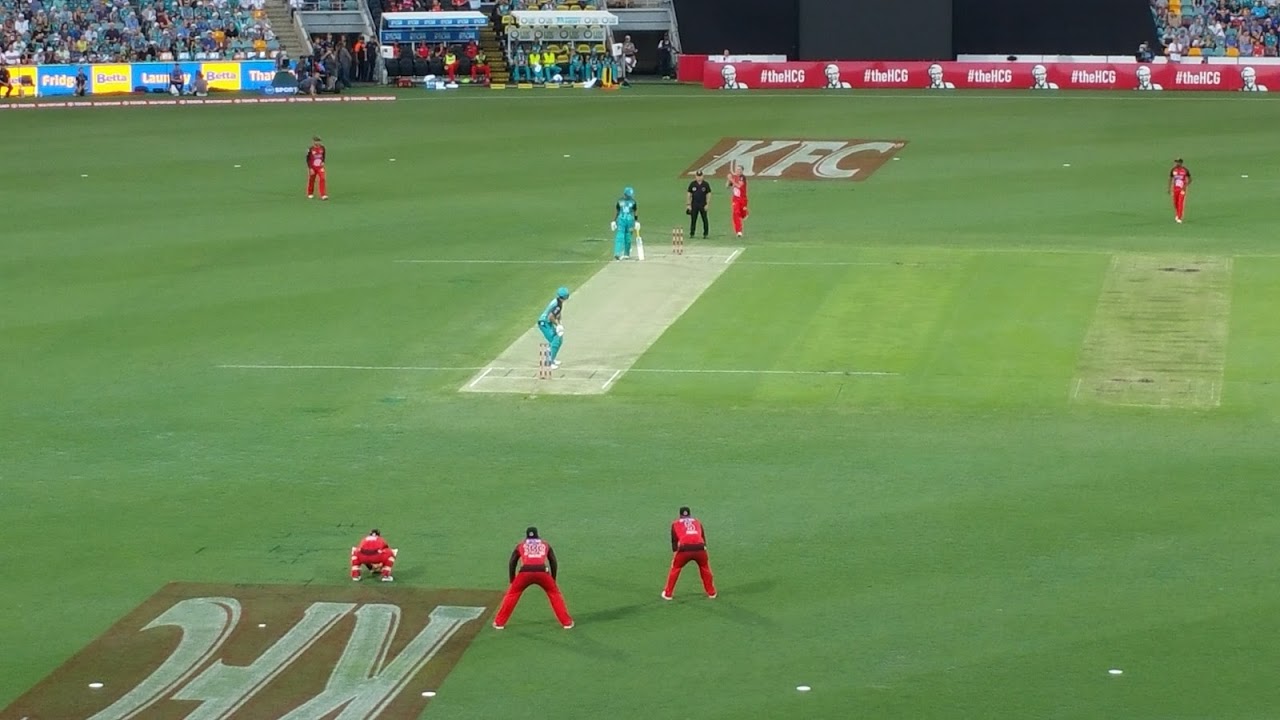
Hallelujah! Last night I took my two young daughters to our first T20 match.
Wow.
I haven’t been living in a cave – I know T20 cricket has become extremely popular in recent years – but I confess I had underestimated the extent to which the promoters of the Big Bash League have successfully packaged the format as family entertainment. I know I’m late in reaching this conclusion and that there are plenty of families out there who realized this ages ago (perhaps it was the 26,000 people at the stadium who gave it away), but that doesn’t lessen the impact of the revelation.
I finally understood that when we think of T20 we need to let go of the idea that it is all about the cricket. That’s only part of it. The spectacle, noise, fun and the involvement of children as fans is at least as important as the game itself. Most of us are familiar with the trademarks of T20 cricket – fireworks at the beginning of the innings, flame jets that erupt when boundaries are scored, electric bails that flash when the stumps are broken, rock music blaring between deliveries, gyrating cheerleaders and costume-clad mascots doing backflips on the sidelines, and Rocket Man, who flies across the stadium at half-time wearing a jet pack – but you really have to attend a game with your kids to understand how much fun the whole package actually is. I don’t follow any football code but might have twigged earlier if I did, because what’s happening in the BBL obviously resembles the franchise-based club system that has worked so well in other sports.
Having said all that, it’s also important to note the standard of the cricket is improving with the BBL now in its fifth year. Four or five years ago, T20 appeared (in my humble opinion) a slap-dash business, with batsmen swatting at everything and hoping for the best, and bowlers banging the ball in and crossing their fingers. At the time, there just didn’t seem to be that much skill involved, and that turned me off. It seemed mostly random.
But things have changed. Even the staunchest Test cricket adherent would – or at least should – acknowledge that T20 requires a skill set that overlaps with but is not identical to that required in the longer forms. Pacing a run chase between the 10th and 20th overs, bowling at the death, even catching a high ball under lights – you don’t walk out of Test or even 50-over cricket and automatically possess these talents. The best T20 players have taken some time to develop these skills and one can’t deny that some of them are darn good at what they do.
As Geoff Lawson correctly notes, it is possible that the strong start to this BBL season is related in part to the low standard of the touring West Indies Test team (and to that I would add the dreadful quality of the flat pitches for the Brisbane and Perth Tests against New Zealand). It has been one of the poorest summers of Test cricket in years, and some Test cricket fans desperate for something to watch are being driven into the arms of the T20 promoters. I’m one of them.
And while Lawson is not the first to suggest a tiered Test cricket competition in which only the best teams are invited to play against Australia, I also think he has a point when he suggests the success of the domestic T20 tournament may actually play a part in making this happen, when he writes,
But back to my family’s experience.
My two girls had an absolute blast. Okay, shucks, so did I.
Even before the end of the game (which our home team lost), the eldest was asking when we could come again to see another match. Yes, they will want home team merchandise (baseball caps, T-shirts, banners) and yes, I will buy at least some of that stuff for them. Score another for the promoters. When I told my eldest daughter of the Women’s BBL she was wide-eyed: ‘You mean, I can play cricket, too?’
Yikes.